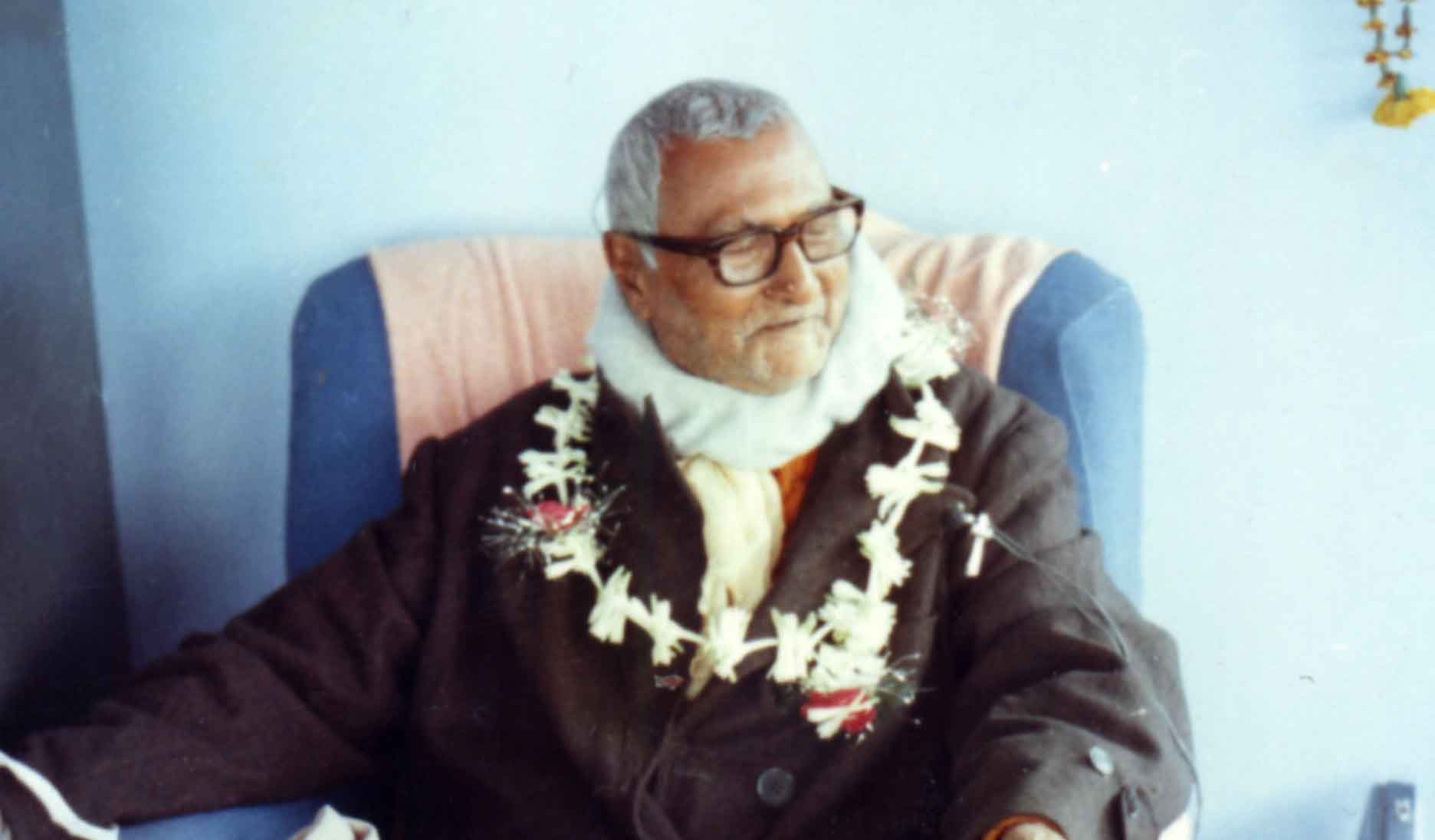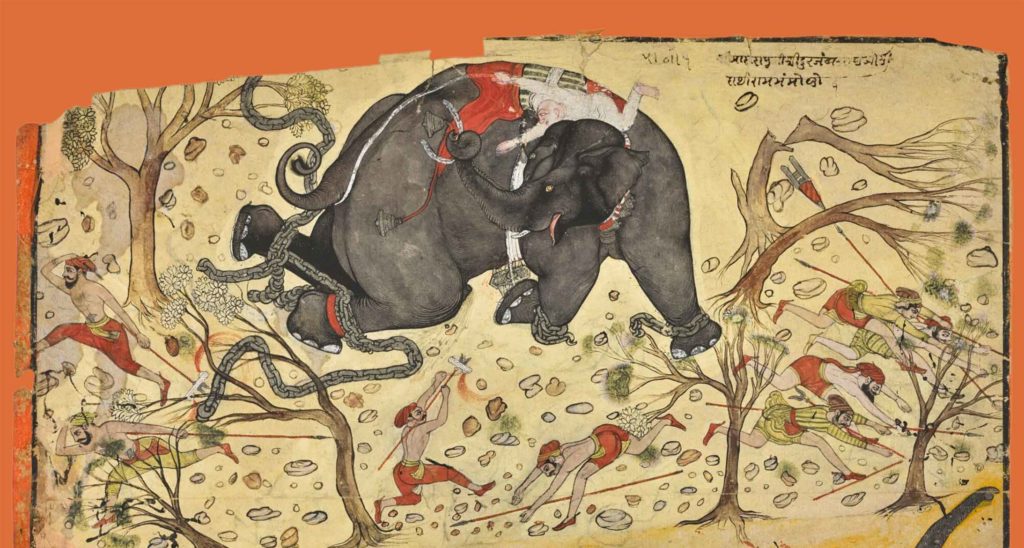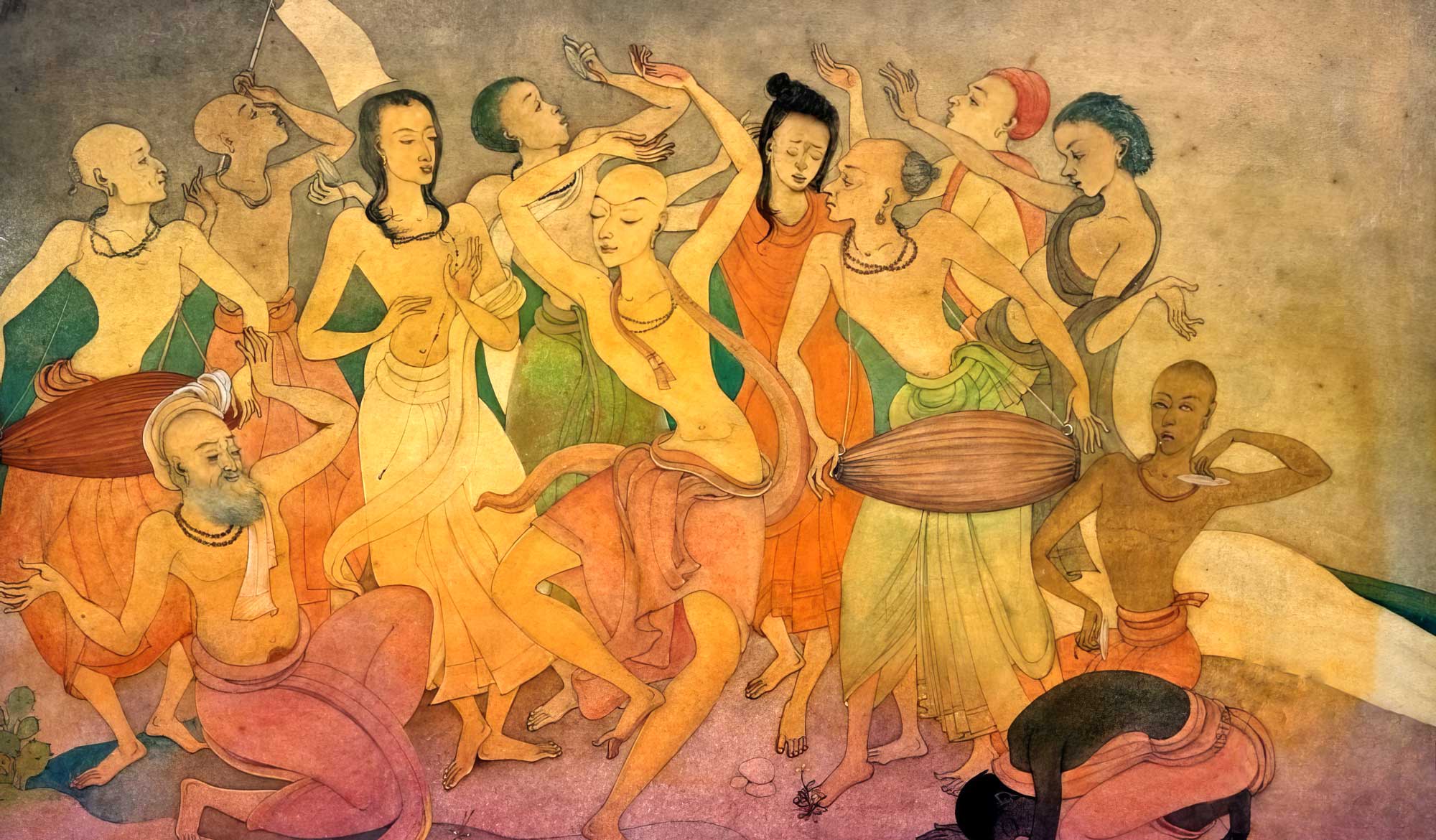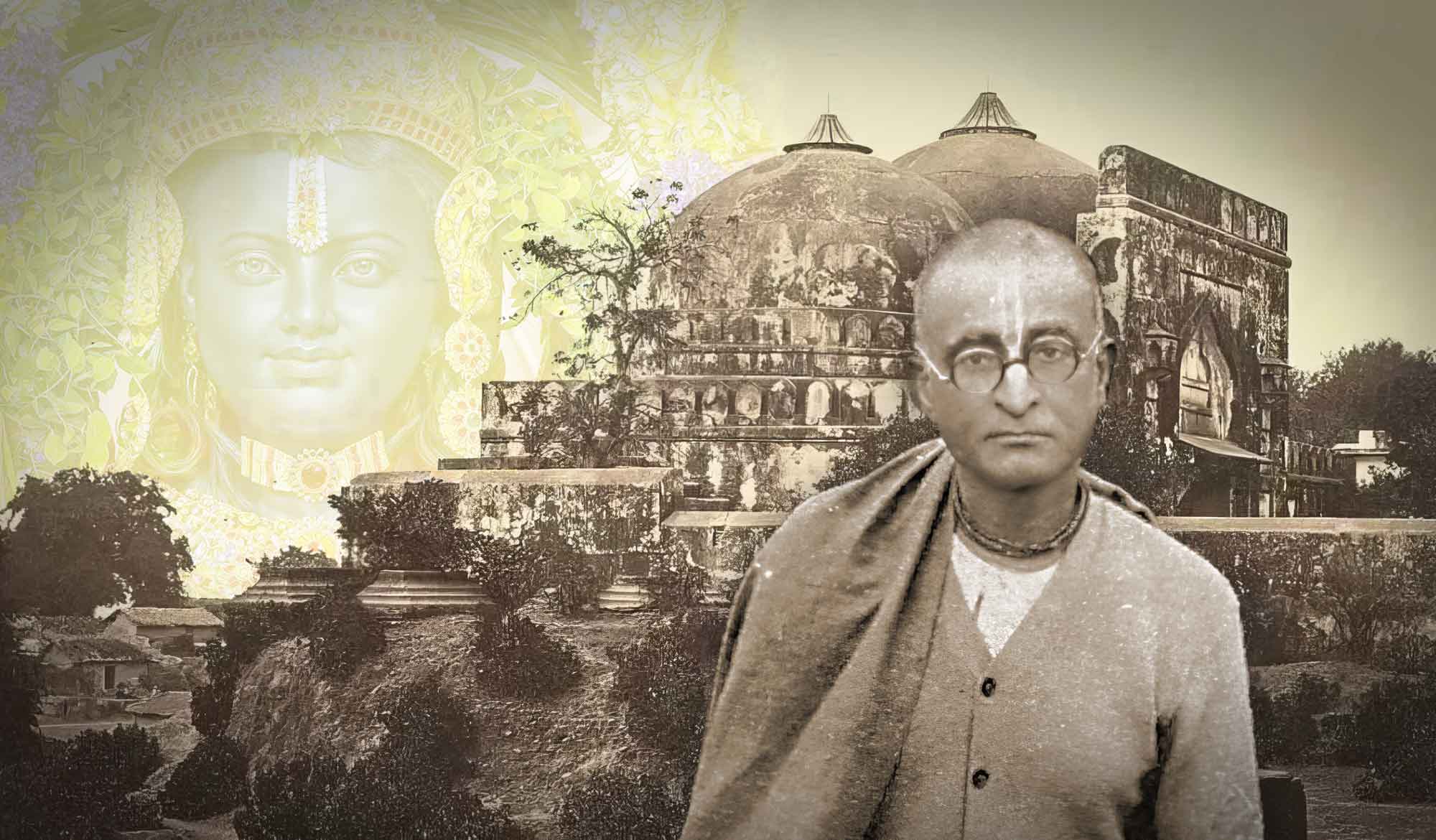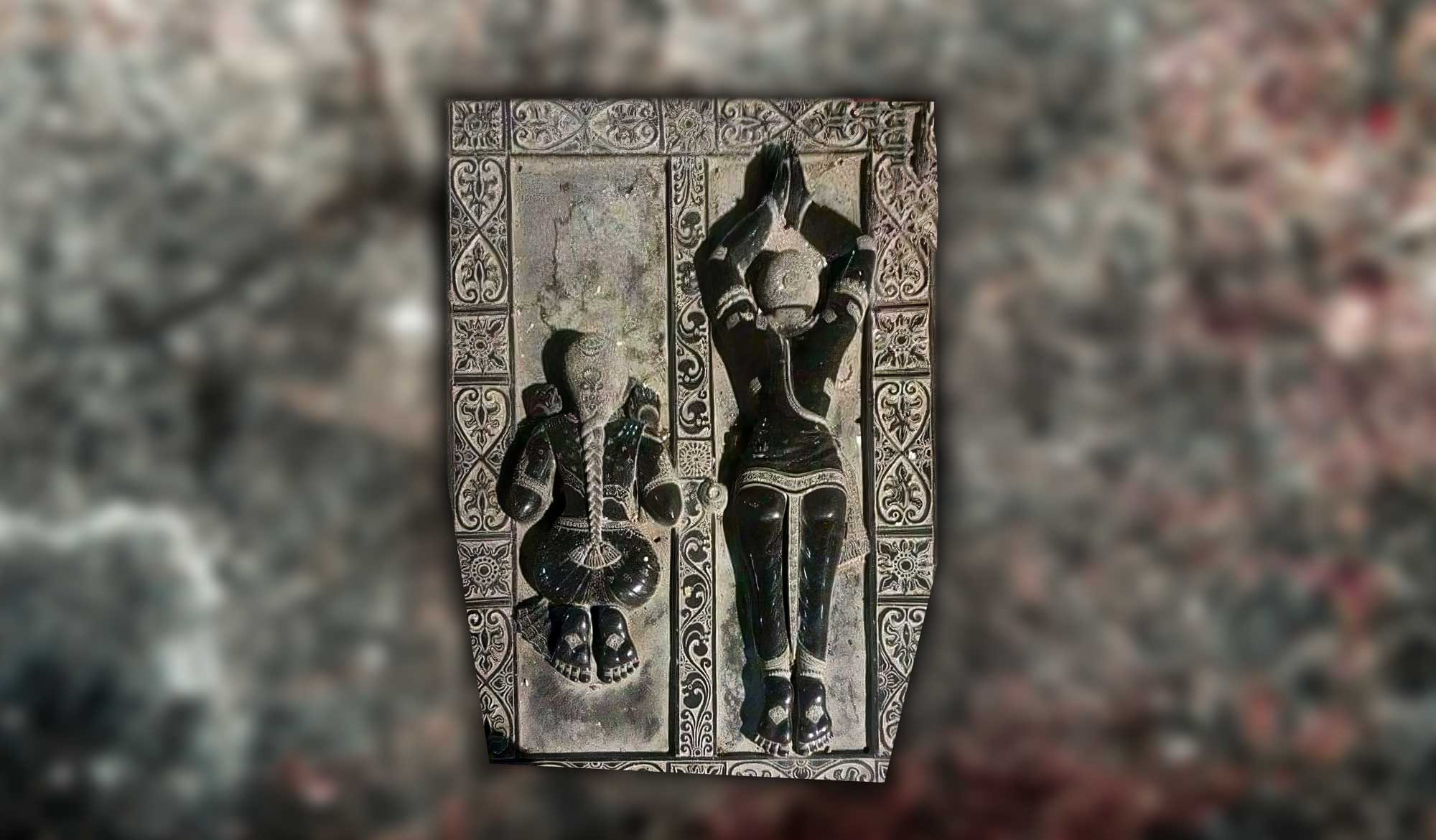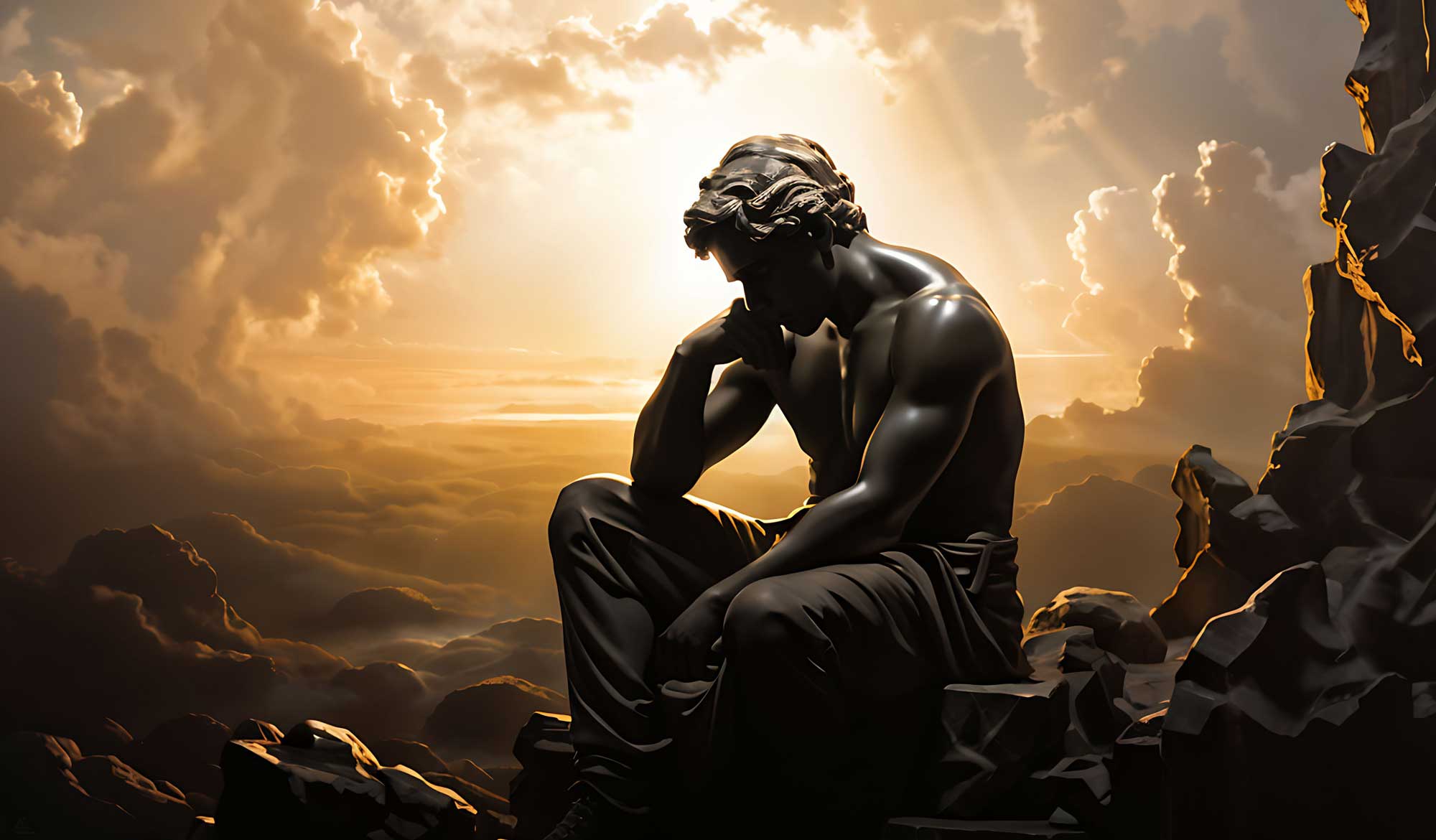Overview
The following is from the book, ‘Follow the Angels’ as well as from recorded conversations wherein Śrīla B.R. Śrīdhara Deva Gosvāmī Mahārāja discusses the unique position of Śrīla Gadādhara Paṇḍita.
The advent day of Gadādhara Paṇḍita is on Amāvasyā, on the night of the dark moon. Mahāprabhu came in the full moon, Purnima, and He drew the entirety of internal wealth from Gadādhara Paṇḍita. Mahāprabhu made him quite empty. He sent Gadādhara Paṇḍita on a black night in the hot summer season. In Mahāprabhu’s case, He descended on the night of the full moon during a very good season. Kṛṣṇa descended in the middle of the lunar period. Rādhārāṇī also appeared in the middle. When They combined as One, They appeared under the full moon. But Gadādhara Paṇḍita appeared under the blackest night.
Gadādhara Paṇḍita appeared and disappeared during the summer season, under the new moon. Mahāprabhu took the fullest advantage from Gadādhara, and sent him to the most negative position. Gadādhara Paṇḍita gave himself voluntarily to Him. His very heart was drawn by Mahāprabhu, bhava-kanti. And he, just like a shadow, gave the entirety of his wealth to Mahāprabhu. Gadādhara Paṇḍita was a shadow, running after Him as if his heart had been stolen. This Person stole all his wealth, and he was fully dependent on Him. Like a shadow, he is moving after Him.
Rādhārāṇī has two corresponding moods: She is Radha in kṛṣṇa-līlā, and in gaura-līlā, the mood of distribution, She is Gadādhara. In gaura-līlā, Kṛṣṇa Gaurāṅga appears with the bhava-kanti of Rādhārāṇī as Gadādhara, the man standing by His side like a niskincana, one who has lost everything. He is standing there just like a facsimile, only a carcass, only the form without the spirit.
But Gadādhara has so much inner attraction for Mahāprabhu that it surpasses all of His other associates. In Gadādhara we find personified love for Gaurāṅga. No such degree of love for Gaurāṅga can be found anywhere else. Next in affection is Svarūpa Dāmodara. Then come Rūpa and Sanātana, in the mādhurya-līlā connection; then Nityānanda, and Śacī Mātā in the vātsalya connection. Advaita Prabhu and Śrīvāsa Paṇḍita also have love for Mahāprabhu, but their devotion is of another type. It is not so deep from the point of view of love, but a respectful attachment.
Gadādhara Paṇḍita tolerated injustice his whole life. All wealth was plundered from his heart. As with Rādhārāṇī, everything is ransacked by Kṛṣṇa to enhance His līlā. And the real owner, he is treated as if he were bankrupt. Gadādhara is bankrupt in his own wealth; that is his position.
He is wholly dedicated to Mahāprabhu. Gadādhara Paṇḍita’s position, the part he played, was something like that of Rādhārāṇī: Her heart stolen by Kṛṣṇa, the empty body still standing. Rādhā-bhāva-dyuti-suvalitam naumi kṛṣṇa-svarūpam – he was fully engrossed in the conception of Śrī Gaurāṅga. Gaurāṅga took everything from him, so he had no other alternative; he was fully absorbed, captured completely by Him.
We find his activity throughout his whole life was like this. Of the other devotees, some were ordered to go to Vṛndāvana, and some were allowed to go there, but though Gadādhara Paṇḍita wanted to visit Vṛndāvana with Mahāprabhu Himself, he was denied. When Jagadānanda Paṇḍita asked to go there, Mahāprabhu, with hesitation, granted him permission, “Yes, go there, but move always under the guidance of Rūpa and Sanātana.” He also gave him some special instructions. But Gadādhara Paṇḍita was not allowed to go there.
He was the expansion of Śrīmatī Rādhārāṇī Herself, yet his peculiar position was such: the Queen of Vṛndāvana, but now transferred to Navadvipa. His position had become just the opposite; he could not enter Vṛndāvana! He prayed for permission, but Mahāprabhu did not give it. He said, “No, stay and live here.” And he had to do so. Śrī Gadādhara Paṇḍita represents the Predominated Moiety of the Whole. The Whole consists of Predominating and Predominated Moieties, and he represents the predominated half. He is one half of the Absolute Truth.
We may look to the outer aspect of Gadādhara; his bhāva has been taken, emptied. Rukmiṇī means dakṣiṇā, not vāma. The vama nature is a little aggressive, and fights with the lover. Dakṣiṇā tolerates everything, whatever comes, only with a defensive attitude. That is dakṣiṇā, that is the mood of Rukmiṇī. So when Mahāprabhu plunders the spirit of Rādhārāṇī, the rebellious vāma nature, what remains is comparable to Rukmiṇī – a passive seer, without any power to assert, only an onlooker. An onlooker – tolerating everything, a very pitiable condition that elicits kindness and sympathy from everyone.
Just see what He is and what She is, and what is Her position now. See how Her lover has taken everything from Her, looted everything from Her, leaving Her as a beggar wandering in the street. Rādhārāṇī, when ransacked to such a degree by Kṛṣṇa, becomes Gadādhara, the pitiable figure. But Her wealth cannot abandon Her forever. She is the proprietor; the owner cannot be far off. After a long time, all must come to Her again, someday. And those who serve Her in Her day of distress will receive a great remuneration when She recalls Her property.
Gadādhara is the āśraya (shelter) and Gaura is the viṣaya (enjoyer). But viṣaya has taken the mood, the nature of āśraya. That is Gaura, both shelter and enjoyer combined. When Kṛṣṇa assumes the characteristics of Radhika, He is Gaura. The inaugurator of nāma-saṅkīrtana, that is Gaura-Nārāyaṇa. He is viṣaya-avatāra, the incarnation of enjoyment. Gaurāṅga is Rādhā-Kṛṣṇa combined; He is Kṛṣṇa in the mood of Rādhikā. He has accepted the nature of Rādhikā.
When He is searching after Himself, trying to taste what sort of ecstasy is in Himself, that self-searching Kṛṣṇa is Gaurāṅga. He is trying to understand Himself, what sort of ecstasy is within Him. Kṛṣṇa in the mood of His devotee, that is Gaurāṅga: introspection, self-seeking, searching for His own wealth.
He is also distributing it to others. He is inquiring about Himself and distributing that personally to the public. That is Gaurāṅga, showing how He should be served by serving Himself. He is demonstrating to the public how He should be served. And for that He took the mood of Rādhārāṇī, to search after Himself. What is there? Why should others come to Him, what is He that so attracts them? And then He is giving Himself to others. Kṛṣṇa is guru. When Kṛṣṇa Himself is guru, then He is Gaurāṅga – guru-rūpa-hari guru-rūpa-harim.
Gadādhara Paṇḍita is rādhā-bhāva-dyuti-suvalitam. The entire wealth of Rādhārāṇī’s feelings, Her sentiments, mood, and even Her luster were taken by Kṛṣṇa. Rādhārāṇī voluntarily gave all these things. “I can’t allow You to roll on the earth with Your body. I shall enfold You.” That emptiness we find in Gadādhara Paṇḍita; he is running after Mahāprabhu as His shadow. But he is not poor. It is his wealth that has given Mahāprabhu such a dignified position.
Some even think that He is superior to Kṛṣṇa Himself, that magnanimous Gaurāṅga, the public deliverer of Kṛṣṇa. For our interest, on behalf of the fallen souls, Gaura has come to us for general relief work. We cannot but think that He is greater than Kṛṣṇa. And Gadādhara Paṇḍita’s contribution is there in Him. In the high summer, in the darkest night, Gadādhara Paṇḍita appeared. But that does not mean that we should underestimate him. What is his reality, his nature as Rādhārāṇī, we have to inquire, understand, and realise.
Gadādhara Paṇḍita disappeared on Amāvasyā, during the dark moon. Bhaktivinoda Ṭhākura also passed away under the dark moon. Prabhupāda has written, Gadādhara dina dhari pāiyācha gaurahari. Prabhupāda noted something common to Bhaktivinoda Ṭhākura and Gadādhara Paṇḍita, that they disappeared on the same day. In this connection Bhaktivinoda Ṭhākura received the grace of Śrī Gaurāṅga. Bhaktivinoda is a favourite of His; Prabhupada has revealed this.
In another place he wrote that the eternal pastimes are always going on in Navadvīpa-dhāma. Sometimes they are underground, invisible to us, and sometimes on the surface. Nitya-līlā always is invisible to us. Now, suddenly, these two personalities have come to the surface, Gadādhara Paṇḍita and Svarūpa Dāmodara. Both have come. Svarūpa Dāmodara came as Gaura Kiśora and Gadādhara Paṇḍita came as Bhaktivinoda Ṭhākura. This is not to be given expression in any and every place. This is concealed truth, not to be expressed everywhere and anywhere. This is the fact: they are always here, continuing their own function, their participation in the līlā of Gaurāṅga. Sometimes it is underground, sometimes over-ground, but it is always difficult to recognize them.
Prabhupada wrote, “I suddenly found Svarūpa-damodara as Gaura Kiśora, and Gadādhara Paṇḍita as Bhaktivinoda Ṭhākura – they most graciously gave me that sort of vision. I could see them as two parsadas, the eternal companions of Gaurāṅga. I found that.” It is mentioned in the conclusion to his Caitanya-caritamrta Anubhāṣya, “Here, in Navadvīpa-dhāma, the eternal pastimes are going on continuously; only those who have got that deep vision can perceive it.”
gadādhara-mitra-vara, śrī-svarūpa-dāmodara
sadā kāla gaura-kṛṣṇa yaje
jagatera dekhi’ kleśa, dhariyā bhikṣuka-veśa
aharahaḥ kṛṣṇa-nāma bhaje
śrī-gaura icchāya dui, mahimā ki kaba mui
aprākṛta-pāriṣada-kathā
prakaṭa haiyā seve, kṛṣṇa-gaurābhinna-deve
aprakāśya kathā yathā tathā
Prabhupāda says, “It is very difficult to perceive the sweet will of Śrī Gaurāṅga, but if we can lift ourselves to that level, we see that Svarūpa Dāmodara Gosvāmī and Śrī Gadādhara Paṇḍita are always engaged in their service here in Navadvīpa. Sometimes it is suppressed and sometimes it is appearing on the surface. In that plane all is going on by the sweet will of Śrī Gaurāṅga, without any restriction. But now I find that those two have appeared on the surface as Śrīla Gaura Kiśora Dāsa Bābājī and Śrīla Bhaktivinoda Ṭhākura. I have seen it with my own eye of divine service. But this is not to be advertised, not to be given publicity anywhere and everywhere; people will laugh at it. But this is my heartfelt conclusion.”
Once, I was going to compile the very gist of the Bhāgavatam. Bhaktivinoda Ṭhākura has compiled one-thousand ślokas in his Bhagavatārka Marīci Mālā – I had in mind half of that, at least three-hundred ślokas to represent the whole Bhāgavatam. I composed an introduction for that book and this śloka is there –
nilāmbhodhi-taṭe sadā sva-virahākṣepānvitaṁ bāndhvaṁ
śrīmad-bhāgavatī katha madirayā sañjīvayan bhāti yaḥ
śrīmad-bhāgavataṁ sadā sva-nayanāśru-pāyanaiḥ pūjāyān
gosvāmī-pravaro gadādhara-vibhur-bhūyāt mad-ekā-gatiḥ
May Gadādhara Prabhu be my exclusive goal, the destination of my whole life. He is sent to engage in a particular duty on the shore of that infinite ocean. The infinite ocean is there and just on the shore he is sitting, and what is he doing? What is his duty? Akṣepānvitaṁ bāndhvaṁ – He’s giving consolation to his friend. And who is that friend? It is Mahāprabhu, who is madly searching for His own self. He is mad! Akṣepānvitam – in a very distressed condition. He is greatly afflicted with separation from His own Self. Gadādhara is such a friend! He is giving some wine to give Him relief from that pain. And what is that wine? That is bhāgavatī-katha – the discourse of Śrīmad Bhāgavatam of Kṛṣṇa and Vṛndāvana. He is distributing, serving the wine of bhāgavata-kathā to his friend who is suffering from the extreme pain of the separation from His own self.
Such is severe separation. Sva-viraha – He is searching in separation from His own self and it is so painful. He is afflicted and to remove His affliction, Gadādhara is serving some wine, and that wine is coming from the discourse of the Śrīmad Bhāgavatam – the Vṛndāvana story.
Sañjīvayan bhāti yaḥ – he is enlivening His life giving that wine of kṛṣṇa-kathā. śrīmad-bhāgavataṁ sadā sva-nayanāśru-pāyanaiḥ. Aśru means articles of worship, and what are the articles for the worship of the Bhāgavatam? His own tears – he is worshipping the Bhāgavatam with his own tears.
Gosvāmī-pravaro gadādhara-vibhur-bhūyāt – may I be blessed with the grace of Gadādhara Paṇḍita, the master of the Bhāgavatam from whom Mahāprabhu listens to the Bhāgavatam. I invoke His mercy. Gadādhara Paṇḍita…his identification was such.
Related Articles
- Śrī Śrī Rādhā Kṛṣṇa & The Fountainhead of All Tattvas by Śrīla Bhakti Pramoda Purī Gosvāmī
- A Prayer Composed on the Occasion of the Disappearance of Śrīla Gadādhara Paṇḍita by Śrīla Bhakti Pramoda Purī Gosvāmī
- The Appearance of Śrīla Gadādhara Paṇḍita by Śrīla Bhakti Rakṣaka Śrīdhara Deva Gosvāmī
- Śrī Śarādīyā Pūjā by Śrīla Bhakti Rakṣaka Śrīdhara Deva Gosvāmī
- Śrī Lalitā Devī and Śrīmatī Rādhārāṇī by Śrīla Bhakti Rakṣaka Śrīdhara Deva Gosvāmī
- The Appearance of Rādhā-kuṇḍa by Śrīla Bhakti Rakṣaka Śrīdhara Deva Gosvāmī
- From Śraddhā to Prema by Śrīla Bhakti Gaurava Narasiṅgha Mahārāja
- Gāyatrī as Rādhārāṇī by Śrīla Bhakti Gaurava Narasiṅgha Mahārāja
- My Guru is Rādhārāṇī by Śrīla Bhakti Gaurava Narasiṅgha Mahārāja
- The Greatest Negative by Śrīla Bhakti Gaurava Narasiṅgha Mahārāja
- Śrī Rādhāṣṭamī by Śrīla Bhakti Gaurava Narasiṅgha Mahārāja
- Śrīla Śrīdhara Mahārāja and the Gem of All Conceptions by Śrīla Bhakti Gaurava Narasiṅgha Mahārāja
- Planets of Faith by Śrīla Bhakti Gaurava Narasiṅgha Mahārāja
- Rādhā-Pāda Darśana by Śrīla Bhakti Gaurava Narasiṅgha Mahārāja
- The Definition of Faith by Gaura Gopāla Dāsa
Further Reading
Prema Dhāma Deva Stotram with the Narasiṅgha Sevaka Commentary – Verses 61-65
In verses 61 to 65 of 'Prema Dhāma Deva Stotram', Śrīla Śrīdhara Mahārāja narrates the pastime of Śrī Caitanya at Caṭaka Parvata In Purī and explains how the scriptures produced by Brahmā and Śiva are ultimately searching for the personality of Mahāprabhu who is merciful too all jīvas, no matter what their social position.
Prabhupāda Śrīla Sarasvatī Ṭhākura’s Visit to Ayodhyā
With the forthcoming observance of Śrī Rāma Navamī, we present 'Prabhupāda Śrīla Sarasvatī Ṭhākura’s Visit to Ayodhyā' written by Śrīla Bhaktisiddhānta Sarasvatī Ṭhākura Prabhupāda from The Gaudīyā magazine, Vol 3. Issue 21/ In December 1924, after visiting Benares and Prāyāga, Sarasvatī Ṭhākura visited the birth-site of Śrī Rāmācandra in Ayodhyā.
Śaraṇāgati – The Only Path to Auspiciousness
In this article, 'Śaraṇāgati - The Only Path to Auspiciousness', Dhīra Lalitā Dāsī analyses the process of śaraṇāgati (surrender) beginning with śraddhā (faith). She also discusses the role of śāstra and the Vaiṣṇava in connection with surrender.
Ātma Samīkṣā – The Value of Introspection
In this article, "Ātma Samīkṣā – The Value of Introspection" Kalki Dāsa highlights the importance of introspection in the life of a devotee and especially in relation to the worldly environment that surrounds us. He also explains how transcendental sound influences our capacity to introspect.
Prema Dhāma Deva Stotram with the Narasiṅgha Sevaka Commentary – Verses 61-65
In verses 61 to 65 of 'Prema Dhāma Deva Stotram', Śrīla Śrīdhara Mahārāja narrates the pastime of Śrī Caitanya at Caṭaka Parvata In Purī and explains how the scriptures produced by Brahmā and Śiva are ultimately searching for the personality of Mahāprabhu who is merciful too all jīvas, no matter what their social position.
Prabhupāda Śrīla Sarasvatī Ṭhākura’s Visit to Ayodhyā
With the forthcoming observance of Śrī Rāma Navamī, we present 'Prabhupāda Śrīla Sarasvatī Ṭhākura’s Visit to Ayodhyā' written by Śrīla Bhaktisiddhānta Sarasvatī Ṭhākura Prabhupāda from The Gaudīyā magazine, Vol 3. Issue 21/ In December 1924, after visiting Benares and Prāyāga, Sarasvatī Ṭhākura visited the birth-site of Śrī Rāmācandra in Ayodhyā.
Śaraṇāgati – The Only Path to Auspiciousness
In this article, 'Śaraṇāgati - The Only Path to Auspiciousness', Dhīra Lalitā Dāsī analyses the process of śaraṇāgati (surrender) beginning with śraddhā (faith). She also discusses the role of śāstra and the Vaiṣṇava in connection with surrender.
Ātma Samīkṣā – The Value of Introspection
In this article, "Ātma Samīkṣā – The Value of Introspection" Kalki Dāsa highlights the importance of introspection in the life of a devotee and especially in relation to the worldly environment that surrounds us. He also explains how transcendental sound influences our capacity to introspect.


